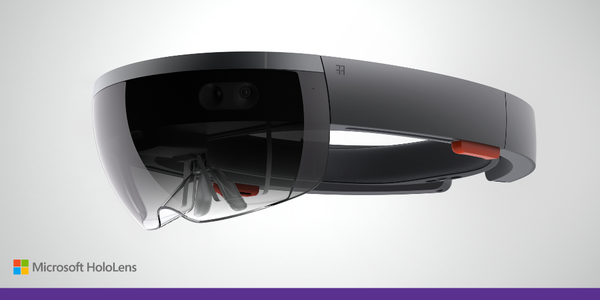Microsoft’s Futuristic HoloLens Puts A Holodeck In Your Living Room

Microsoft for months has been boasting that Windows 10 will be the first operating system to run across the full range of computing devices—from a new, 64-inch 4K slate, to PCs, tablets and smartphones less than 8 inches in size. But it never said anything about a pair of hologram-projecting goggles that will immerse wearers into virtual worlds, let them watch television on screens that aren’t there, or build 3D objects out of thin air.
Microsoft HoloLens, unveiled Wednesday at an event at the company’s Redmond, Washington, headquarters, does all that and more. It’s also an indication that Microsoft wants to shake its image as a reliable provider of spreadsheets and Word processing programs that leaves the fun stuff—from gold watches to smartglasses – to rivals like Apple and Google.
“We want to move from people needing Windows to choosing Windows to loving Windows,” said CEO Satya Nadella, speaking in a room directly above where Microsoft has been developing HoloLens in secret for the past several years.
HoloLens is a wraparound headset that projects 3D images into the wearer’s field of vision. It uses an array of sensors to track body position and head movements, and it has its own, internal CPU and GPU so it doesn’t need to be tethered to a host device. It runs on a version of Windows called Windows 10 Holographic.
At the Windows 10 preview event, company reps showed off a range of applications that seemed to go well beyond the capabilities of Google Glass, which is the most obviously comparable product currently on the market. While Glass can deliver an augmented reality experience by projecting information displays and graphics onto an eyepiece, HoloLens appears to give users the ability to manipulate and interact with what’s projected in front of them.
“It’s the most advanced holographics the world has ever seen,” said Microsoft Technical Fellow Alex Kipman, who preceded Nadella on stage. Kipman showed demos of HoloLens wearers playing what (to them) looked like a real-world, life-sized version of Minecraft, building a 3D quadcopter drone, and practicing heart surgery on a simulated patient.
The device will be publicly available “within the Windows 10 timeframe,” said Kipman, which means later this year.
© Copyright IBTimes 2024. All rights reserved.






















